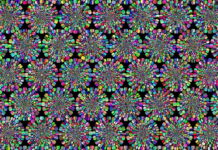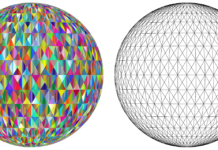“Ofat,” a term that echoes through the corridors of academia and innovation, possesses a profound significance in various domains, ranging from mathematics to engineering and beyond. Its allure lies not merely in its succinctness but in its multifaceted applications and implications across diverse disciplines. Ofat, an acronym for “One Factor At a Time,” encapsulates a systematic approach to experimentation and problem-solving, wielding immense power in unraveling the intricacies of complex systems. Through the lens of Ofat, researchers, engineers, and scholars embark on an odyssey of discovery, dissecting phenomena, and unlocking insights with methodical precision.
At its core, Ofat represents a methodology characterized by its sequential exploration of individual factors within a system while keeping all other factors constant. This deliberate isolation of variables allows for a meticulous examination of each component’s impact on the system’s behavior or outcome. Within the realm of experimental design, Ofat serves as a guiding principle, facilitating the systematic manipulation and observation of variables to discern patterns, causality, and optimization opportunities. By methodically traversing through the landscape of factors, researchers harness the power of Ofat to unravel the intricate tapestry of cause and effect, inching closer to the elusive truths hidden within complex systems.
In the domain of chemical engineering, Ofat emerges as a stalwart ally in the quest for process optimization and innovation. Here, practitioners harness its principles to unravel the nuanced interplay of variables governing chemical reactions, material properties, and industrial processes. Whether in the realms of pharmaceuticals, petrochemicals, or biotechnology, Ofat serves as a beacon guiding engineers through the labyrinth of variables, steering them towards efficiency, reliability, and sustainability. Through meticulous experimentation, conducted one factor at a time, chemical engineers decode the language of molecules and reactions, unraveling the secrets that govern transformative processes.
Venturing further into the realm of Ofat, its influence permeates the landscape of agricultural science, where researchers delve into the intricate dynamics of crop growth, soil health, and environmental sustainability. By systematically manipulating factors such as irrigation, fertilizer application, and crop varieties, agronomists unlock the secrets of optimal yield and resilience in the face of fluctuating climates and emerging pests. Through rigorous experimentation guided by Ofat, agricultural scientists decipher the nuanced interactions between soil composition, climate conditions, and agronomic practices, paving the way for advancements in food security and agricultural sustainability.
In the realm of information technology and software development, Ofat manifests as a guiding principle in the quest for robustness, scalability, and user experience. Software engineers meticulously test and refine individual components of complex systems, iterating through iterations with precision and purpose. By isolating variables such as code modules, user interfaces, and network protocols, developers gain invaluable insights into the behavior and performance of their creations. Through the lens of Ofat, they navigate the intricate web of dependencies and interactions, optimizing each element for efficiency, reliability, and user satisfaction.
Beyond the confines of traditional disciplines, Ofat transcends boundaries, finding resonance in the realms of social science, economics, and public policy. Researchers employ its principles to disentangle the myriad factors shaping human behavior, market dynamics, and societal trends. By isolating variables such as economic policies, social norms, and technological innovations, scholars unravel the complex tapestry of human society, shedding light on the forces driving progress, inequality, and social change. Through rigorous analysis guided by Ofat, economists, sociologists, and policymakers gain deeper insights into the mechanisms underpinning prosperity, resilience, and equitable development.
As Ofat continues to weave its way through the fabric of academia, industry, and innovation, its significance only grows more pronounced with each passing day. Its systematic approach to experimentation and problem-solving empowers researchers, engineers, and scholars to unlock the mysteries of the natural world, harness the potential of technology, and shape the contours of human society. In the grand tapestry of human knowledge, Ofat emerges as a thread of inquiry, connecting disparate disciplines and guiding the quest for understanding, innovation, and progress. With each iteration, each factor examined, Ofat illuminates new pathways, beckoning us toward a future defined by curiosity, discovery, and possibility.
As Ofat continues to weave its way through the fabric of academia, industry, and innovation, its significance only grows more pronounced with each passing day. Its systematic approach to experimentation and problem-solving empowers researchers, engineers, and scholars to unlock the mysteries of the natural world, harness the potential of technology, and shape the contours of human society. In the grand tapestry of human knowledge, Ofat emerges as a thread of inquiry, connecting disparate disciplines and guiding the quest for understanding, innovation, and progress. With each iteration, each factor examined, Ofat illuminates new pathways, beckoning us toward a future defined by curiosity, discovery, and possibility.
In the realm of healthcare and medicine, Ofat serves as a beacon of hope, guiding researchers in the quest to understand disease mechanisms, develop novel therapies, and improve patient outcomes. By systematically varying factors such as drug dosages, treatment regimens, and patient demographics, medical scientists unravel the intricacies of human physiology and pathology. Through rigorous experimentation guided by Ofat, they decipher the molecular mechanisms underlying diseases, identify promising therapeutic targets, and optimize treatment protocols for maximum efficacy and safety. From bench to bedside, Ofat empowers healthcare professionals to navigate the complexities of disease management and healthcare delivery, fostering innovation and improving the quality of care for patients worldwide.
As we peer into the future, the influence of Ofat shows no signs of waning. With the advent of artificial intelligence, big data analytics, and advanced simulation techniques, the scope and scale of experimentation are poised to reach unprecedented heights. Through the fusion of Ofat principles with cutting-edge technologies, researchers gain new tools and insights to tackle the most pressing challenges facing humanity, from climate change and energy sustainability to global health and social inequality. By harnessing the power of Ofat in combination with emerging technologies, we unlock new frontiers of knowledge, innovation, and progress, shaping a future defined by resilience, sustainability, and human flourishing.
In conclusion, Ofat stands as a testament to the power of systematic inquiry and disciplined experimentation in the pursuit of knowledge and innovation. Across diverse domains and disciplines, its principles guide researchers, engineers, and scholars on a journey of discovery, unlocking the mysteries of the natural world, advancing technological frontiers, and shaping the contours of human society. As we continue to harness its power and embrace its principles, Ofat paves the way for a future defined by curiosity, creativity, and endless possibility.






















